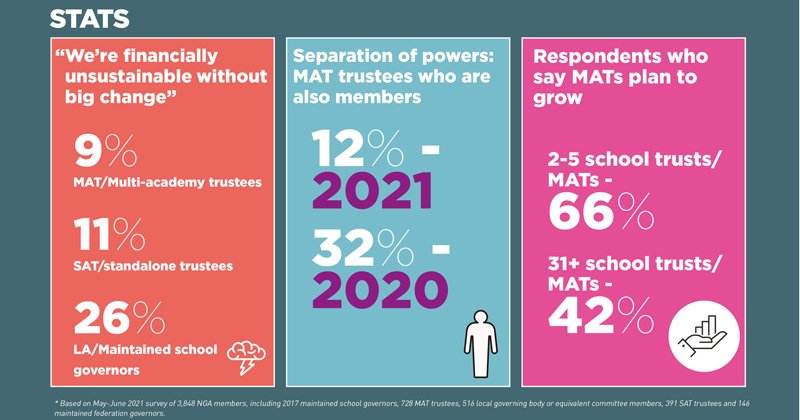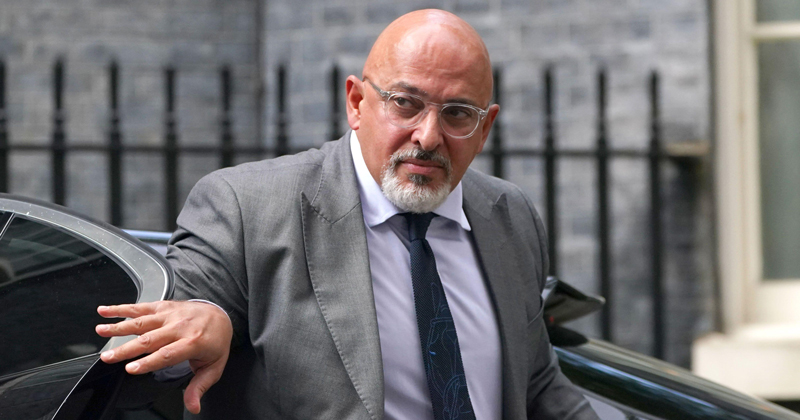The new education secretary faces an uphill struggle to revive the multi-academy trust agenda, with new figures suggesting efforts to nudge schools into converting are failing to cut through.
A National Governance Association (NGA) member survey reveals just 5 per cent of maintained school governors and 15 per cent of single-academy trustees plan to join a MAT in the near future.
The findings, shared exclusively with Schools Week, lay bare the scale of the challenge facing Nadhim Zahawi (pictured) in completing the government’s push for every school to join a MAT.
The limited enthusiasm comes despite Gavin Williamson’s MAT “vision” speech and raft of policies supporting growth in April. NGA members also report growing appreciation of their own MATs during the pandemic.
Sam Henson, the association’s policy and information director, said the findings were the survey’s “biggest surprise”. Almost two-thirds of NGA members at maintained schools have not even considered joining MATs.
Many were “doing OK by themselves” and were happy with council support, Henson said. “The same old messages won’t work.”

Academy openings at second lowest in a decade
It is not clear how much encouragement maintained schools have received directly to convert and join MATs. Jeff Marshall, of academy advisers J&G Marshall, said he had seen “little if any”. Without further messaging, schools would “sit there as they are”.
Only 259 academies opened between January and August, the second lowest in a decade, as schools grappled with the pandemic.
More struggling schools will be sponsored by MATs as inspections resume. But forced conversion remains controversial, with ongoing campaigns in places such as Peacehaven, East Sussex. Ministers have not dared mandate all schools convert since an ill-fated push in 2016.
Heavy rhetorical pressure could backfire too. Recent ministerial warnings about single-academy trust (SAT) leaders sitting in “splendid isolation” had “really wound them up”, Marshall said.
Forty-three percent of NGA members at SATs said they had not considered a multi-academy trust. Another 24 per cent said they had actively decided against it.
MATs are keen to grow
The survey suggests MATs are keen to grow, though, with 57 per cent of multi-academy trustees and local governing body members saying their trusts planned to expand. It marks a slight increase on last year’s 53 per cent.
But the largest trusts were the most lukewarm about growth, despite reporting most pressure to from government officials. Just 42 per cent planned expansion.
Fewer MATs want “massive empires”, Henson said, with lessons learnt from over-rapid expansion in the past.
Leora Cruddas, the chief executive of the Confederation of School Trusts, said the poll was “probably too early” to assess whether the renewed MAT drive was working.

Structural reform was not a “panacea” in itself, but she urged schools in MATs to promote the benefits.
Other NGA findings will make better reading for the sector. Nearly 75 per cent of academy committee members feel heard by MAT leaders, versus 57 per cent in 2019. Just over 50 per cent are happy pooling school resources at MAT level, up from 41 per cent two years ago.
“Key things are improving,” Henson said.
But Geoff Barton, the general secretary of the Association of School and College Leaders, said schools would “have to wait and see” new ministers’ interest in more major measures to complete reforms.
He warned significant upheaval could “divert time and resources away from teaching”.
DfE said it “continues to urge schools and single academy trusts to explore the benefits of being part of a strong multi-academy trust”.
















Odd use of the word ‘danger’.